Photo Tampering throughout History
In 1909 Lewis Hine spoke at a social work conference on the subject of photography and social reform:?
The picture is a symbol that brings one immediately into close touch with reality. In fact, it is often more effective than the reality would have been, because, in the picture, the non-essential and conflicting interests have been eliminated.
The average person believes implicitly that the photograph cannot falsify. Of course, you and I know that this unbounded faith in the integrity of the photograph is often rudely shaken, for, while photographs may not lie, liars may photograph.
Editor: Today, liars may become presidents, lawmakers and generals, and all use sophisticated spin techniques, relying largely on photography for deception; to gain power, amass profits and lead us to war. It is vital therefore, that learning this language becomes part of our basic education.
Though photo manipulation has become more common in the age of digital cameras and image editing software, it actually dates back almost as far as the invention of photography. Gathered below is an overview of some of the more notable instances of photo manipulation in history. For recent years, an exhaustive inventory of every photo manipulation would be nearly impossible, so we focus here on the instances that have been most controversial or notorious, or ones that raise the most interesting ethical questions.
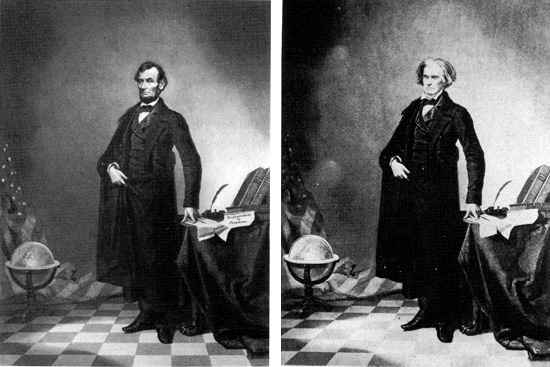
This nearly iconic portrait (in the form of a lithograph) of U.S. President Abraham Lincoln is a composite of Lincoln?s head and the Southern politician John Calhoun?s body.
tagged? Politics
Politics
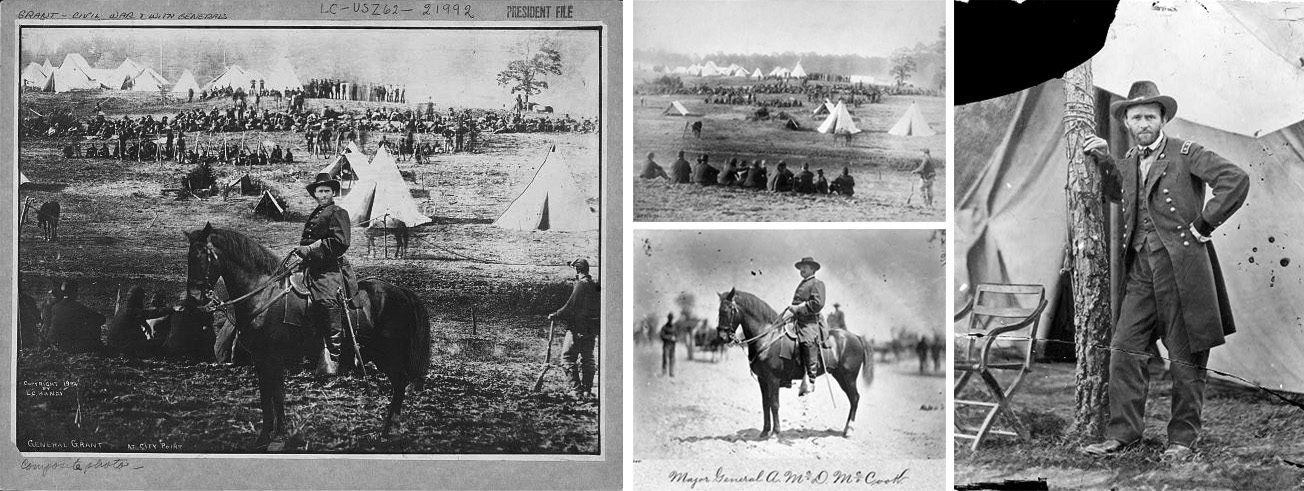
This print (Library of Congress, Prints & Photographs Division) appears to be of General Ulysses S. Grant in front of his troops at City Point, Virginia, during the American Civil War. Some very nice detective work by researchers at the Library of Congress revealed that this print is a composite of three separate prints: (1) the head in this photo is taken from a portrait of Grant; (2) the horse and body are those of Major General Alexander M. McCook; and (3) the background is of Confederate prisoners captured at the battle of Fisher?s Hill, VA.
tagged? Politics
Politics
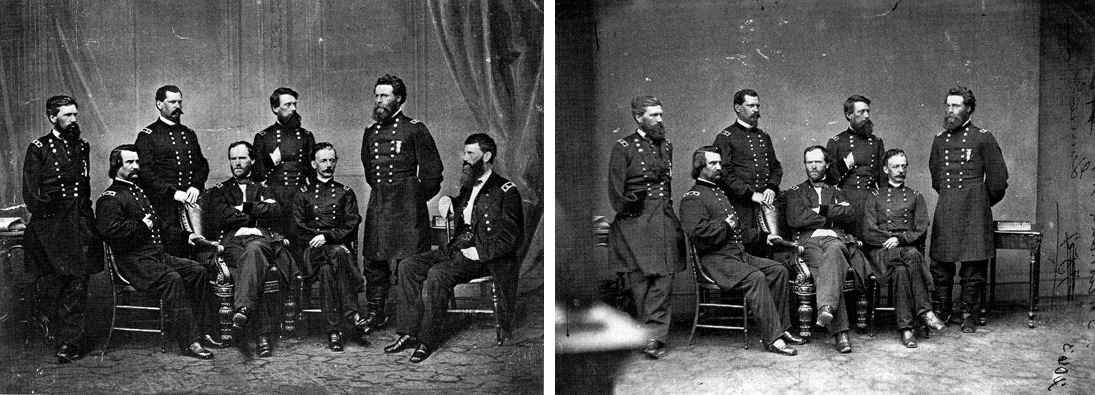
In this photo by famed photographer Mathew Brady, General Sherman is seen posing with his Generals. General Francis P. Blair (far right) was added to the original photograph. The photo on the left is another image from the same sitting, at which General Blair was not in attendance.tagged? Politics
Politics
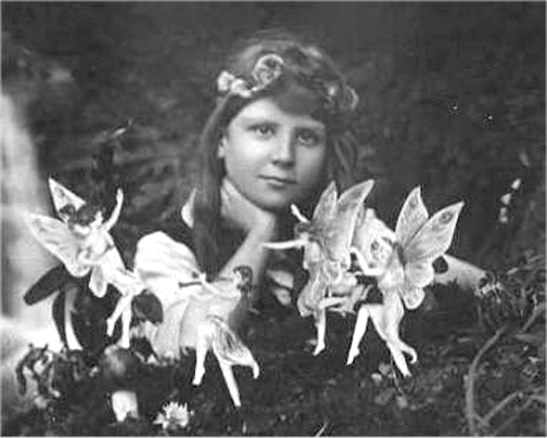
Two young cousins, Elsie Wright and Frances Griffiths, produced a series of photographs purportedly showing small winged fairies. These highly publicized photos created a sensation, and although some believed them to be fake, many believed them to be real. ?Many years later, the cousins admitted that, though the photographs were not manipulated, the fairies depicted were actually cardboard cutouts posed in the scene. Nevertheless, they continued to claim that they had seen fairies.
tagged? Media
Media

Stalin routinely air-brushed his enemies out of photographs. In this photograph a commissar was removed from the original photograph after falling out of favor with Stalin.tagged? Politics
Politics
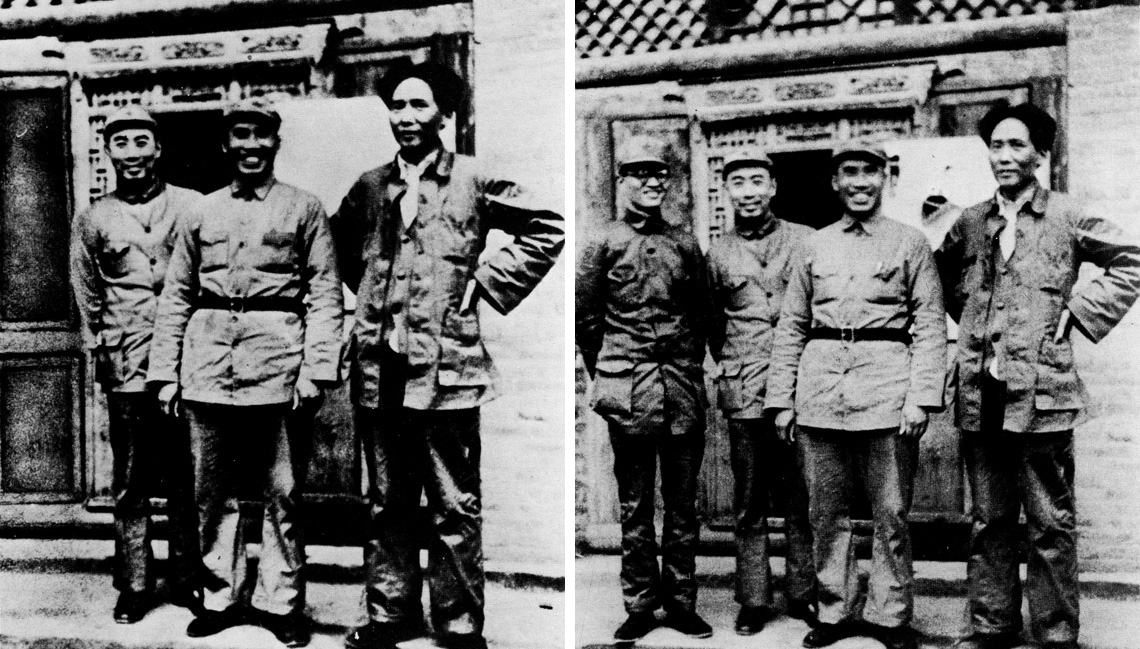
In this doctored photograph, Mao Tse-tung (right) had Po Ku (left) removed from the original photograph, after Po Ku fell out of favor with Mao.
tagged? Politics
Politics
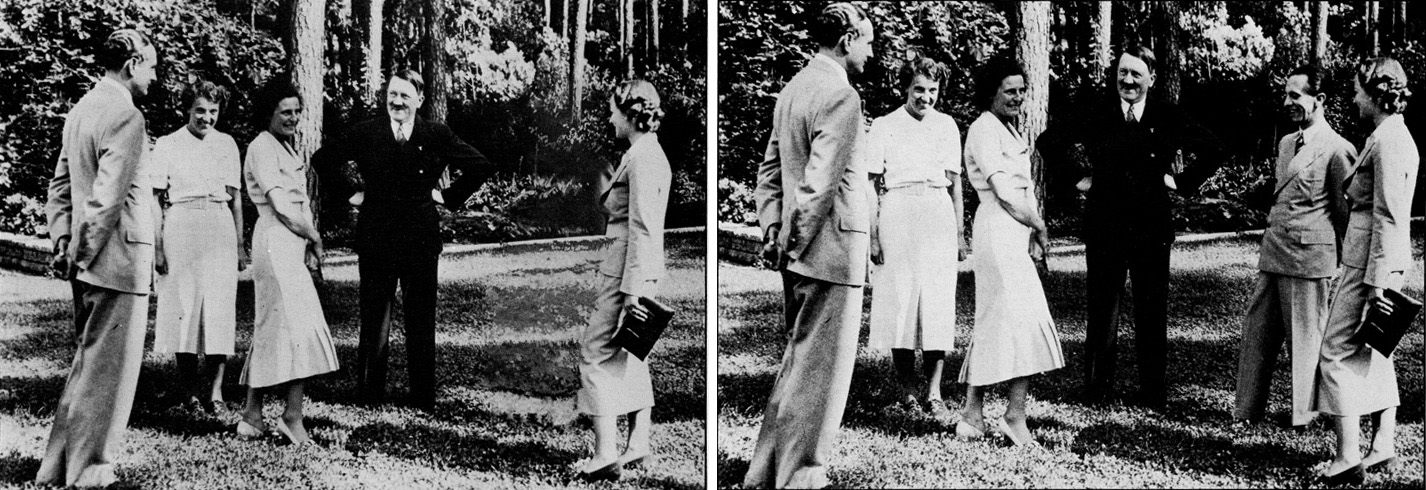
In this doctored photograph, Adolf Hitler had Joseph Goebbels (second from the right) removed from the original photograph. It remains unclear why exactly Goebbels fell out of favor with Hitler.tagged? Politics
Politics
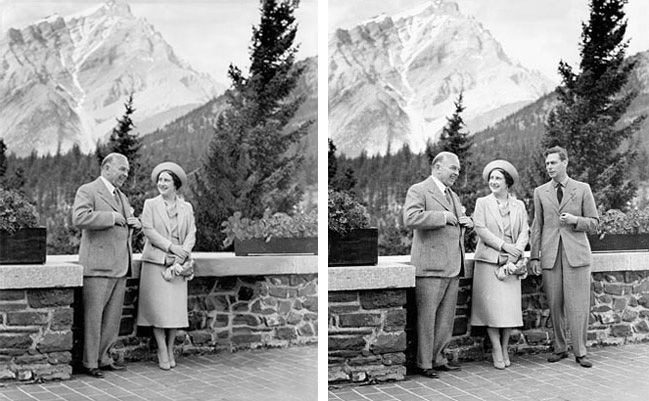
In this doctored photo of Queen Elizabeth and Canadian Prime Minister William Lyon Mackenzie King in Banff, Alberta, King George VI was removed from the original photograph. This photo was used on an election poster for the Prime Minister. It is hypothesized that the Prime Minister had the photo altered because a photo of just him and the Queen painted him in a more powerful light.
tagged? Politics
Politics
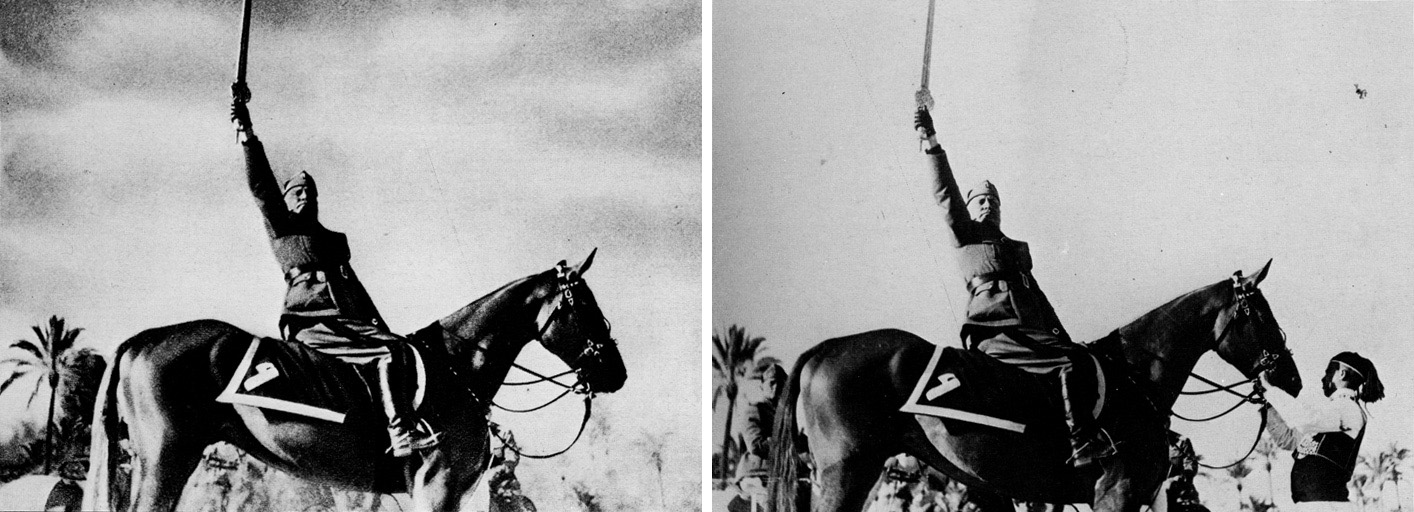
In order to create a more heroic portrait of himself, Benito Mussolini had the horse handler removed from the original photograph.
tagged? Politics
Politics
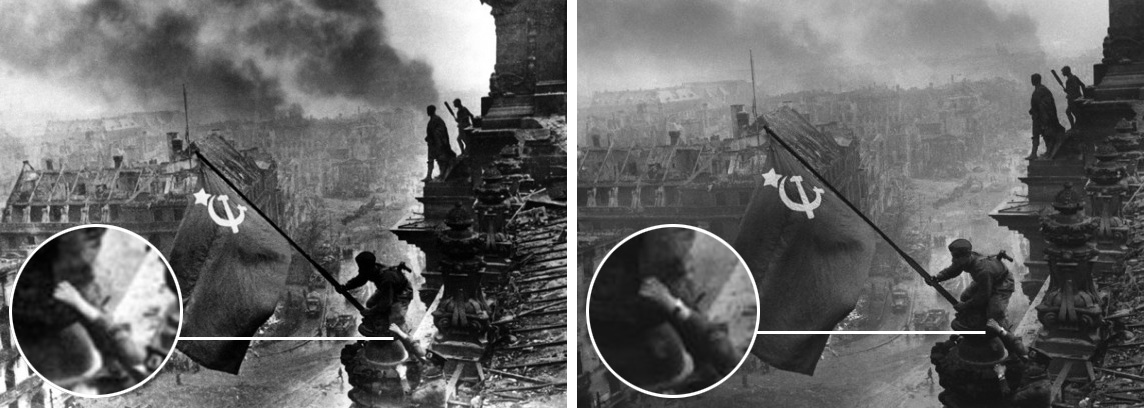
A World War II photo published in the Russian magazine Ogoniok shows several Russian soldiers raising the Soviet flag atop the German Reichstag building. At the request of the editor-in-chief of the magazine, the photo was altered prior to publication to remove what appeared to be a watch from the right arm of the solider supporting the flag-bearer. Though in reality the object on his right arm was most likely a compass, there was concern that viewers would conclude that he had watches on both wrists, and take that as evidence that he had been looting.tagged? Politics
Politics
1950 Tydings
It is believed that this doctored photograph contributed to Senator Millard Tydings? electoral defeat in 1950. The photo of Tydings (right) conversing with Earl Browder (left), a leader of the American Communist party, was meant to suggest that Tydings had communist sympathies.
 Politics
Politics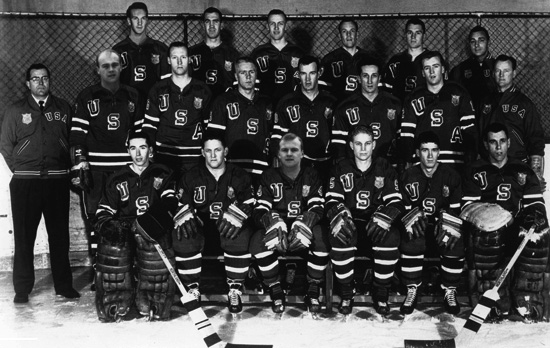
In 1960 the U.S. Olympic hockey team defeated the Soviet Union and Czechoslovakia to win its first Olympic gold medal in hockey. The official team photo was doctored to include the faces of Bill Cleary (front row, third from the left), Bob Cleary (middle row, far left) and John Mayasich (top row, far left), who were not present for the team photo. These players were superimposed onto the bodies of players Bob Dupuis, Larry Alm and Herb Brooks, respectively.
tagged?
 Politics,?
Politics,? Sports
Sports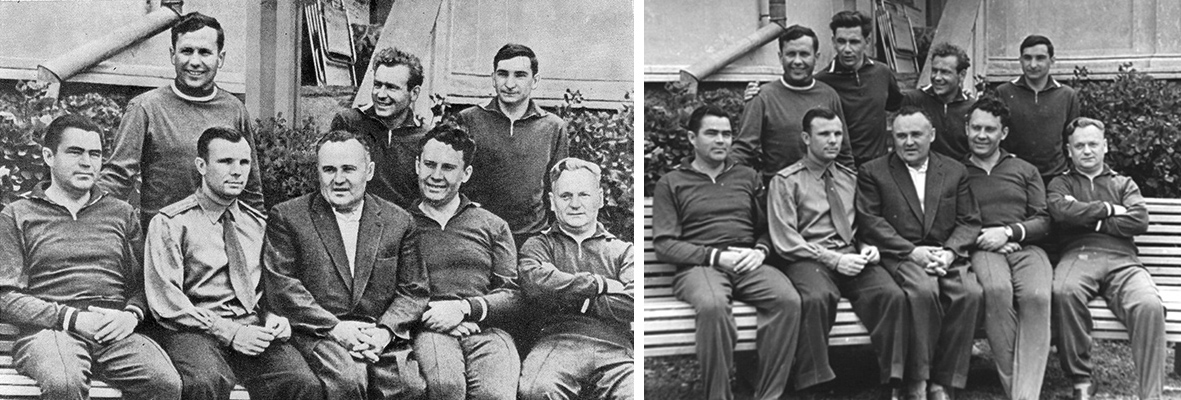
On April 12, 1961 a Russian team of cosmonauts led by Yuri Gagarin were the first humans to complete an orbit of earth. One of the cosmonauts, Grigoriy Nelyubov, was removed from a photo of the team taken after their journey. Nelyubov had been expelled from the program for misbehavior.tagged?
 Politics,?
Politics,? Science
Science
When in the summer of 1968 Fidel Castro (right) approves of the Soviet intervention in Czechoslovakia, Carlos Franqui (middle) cuts off relations with the regime and goes into exile in Italy. His image was removed from photographs. Franqui wrote about his feeling of being erased: I discover my photographic death. Do I exist? I am a little black, I am a little white, I am a little shit, On Fidel?s vest.
tagged?
 Politics
Politics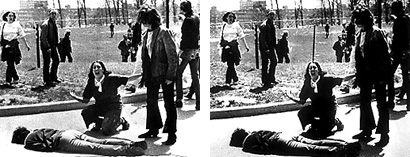
This Pulitzer Prize winning photo by John Filo shows Mary Ann Vecchio screaming as she kneels over the body of student Jeffrey Miller at Kent State University, where National Guardsmen had fired into a crowd of demonstrators, killing four and wounding nine. The photo originally featured a visually distracting fencepost behind Mary Ann Vecchio?s head, but this was removed by an unknown photo editor in the early 1970?s. The modified photo then was published in Life magazine and other publications.tagged?
 Media
Media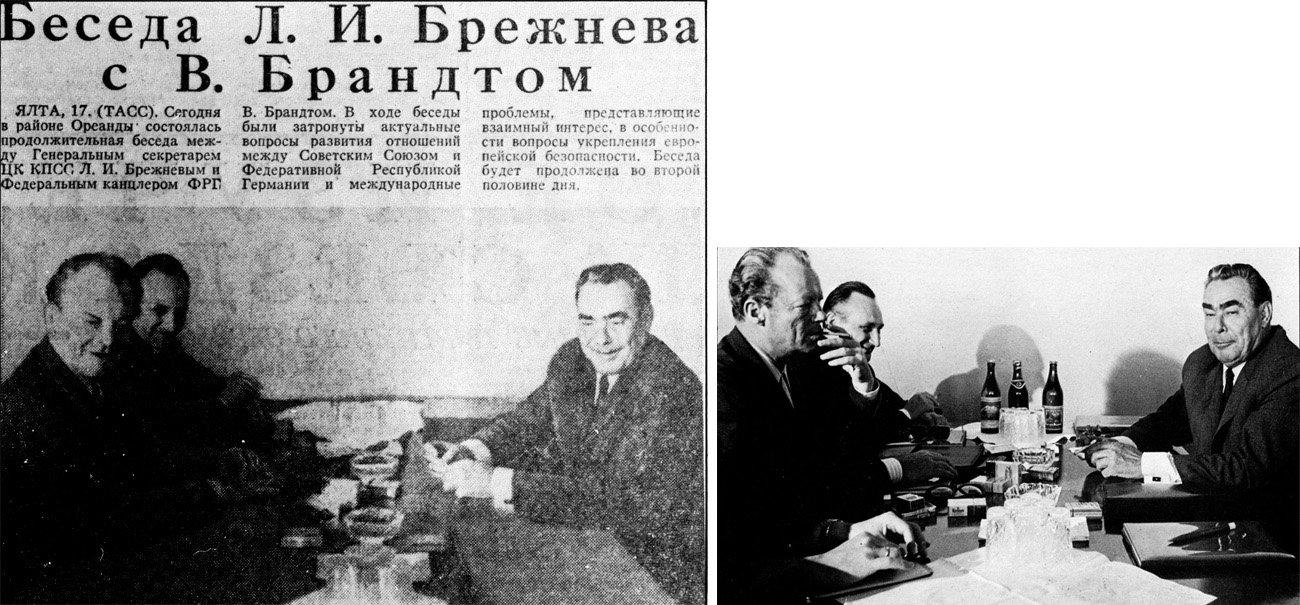
The German Chancellor of West Germany, Willy Brandt (far left in photo), meets with Leonid Brezhnev (far right), First Secretary of the Communist Party. The two smoke and drink, and it is reported that the atmosphere is cordial and that they are drunk. The German press publishes a photograph that shows the beer bottles on the table. The Soviet press, however, removed the bottles from the original photograph.
 Media,?
Media,? Politics
Politics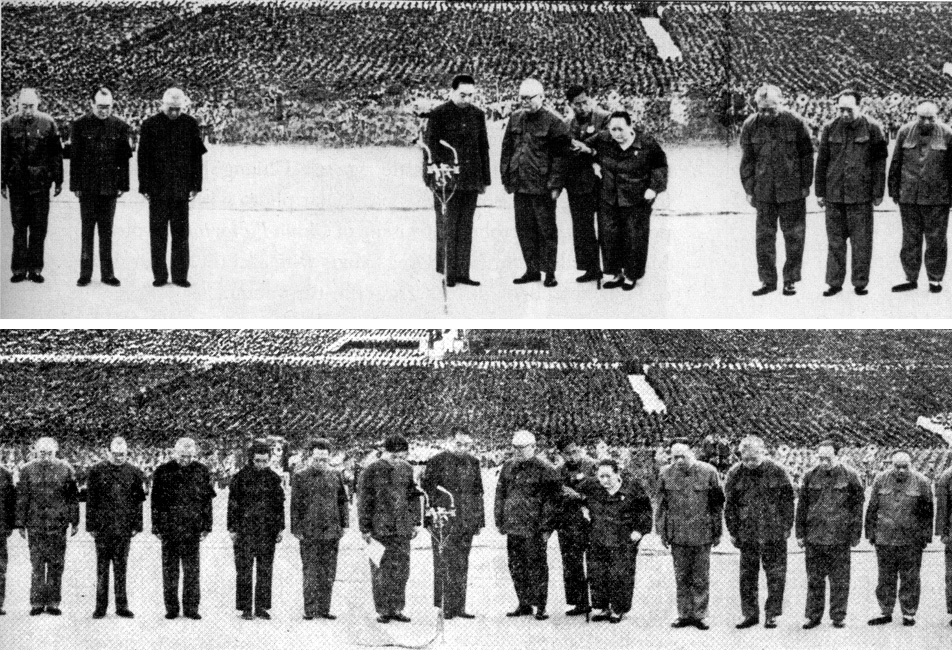
The so called ?Gang of Four? were removed from this original photograph of a memorial ceremony for Mao Tse-Tung held at Tiananmen Square.
tagged?
 Politics
Politics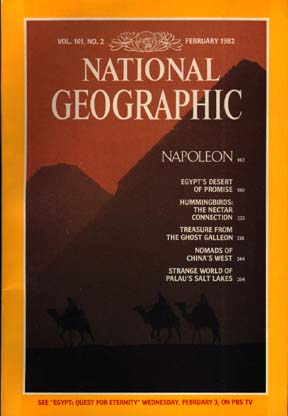
In this National Geographic magazine cover story on Egypt by Gorden Gahen, the Great Pyramid of Giza was digitally moved to fit the magazine?s vertical format. Tom Kennedy, who became the director of photography at National Geographic after the cover was manipulated, stated that ?We no longer use that technology to manipulate elements in a photo simply to achieve a more compelling graphic effect. We regarded that afterwards as a mistake, and we wouldn?t repeat that mistake today?.tagged?
 Media,?
Media,? Photojournalism ethics
Photojournalism ethics
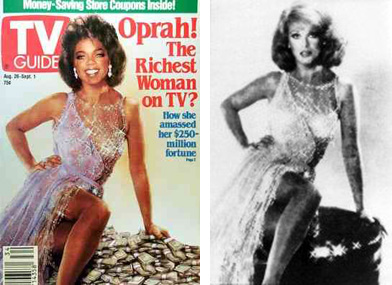
The cover of TV Guide displayed this picture of daytime talk-show host Oprah Winfrey. This picture was created by splicing the head of Winfrey onto the body of actress Ann-Margret, taken from a 1979 publicity shot. The composite was created without permission of Winfrey or Ann-Margret, and was detected by Ann-Margret?s fashion designer, who recognized the dress.
tagged? Body Image,?
Body Image,? Media
Media
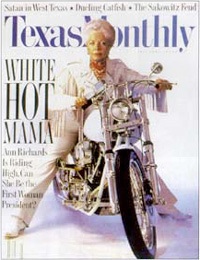
This cover of TexasMonthly shows the then Texas Governor Ann Richards astride a Harley-Davidson Motorcycle. This picture was created by splicing the head of Richards onto the body of a model. The editors explained that their credit page disclosed this fact by noting in the credits page ?Cover Photograph by Jim Myers ? Stock photograph (head shot) By Kevin Vandivier / Texastock?. After the motorcycle cover appeared, Richards said that since the model had such a nice body, she could hardly complain.tagged? Media,?
Media,? Politics
Politics
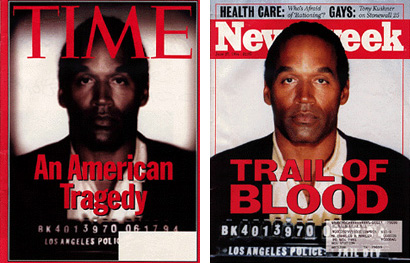
This digitally altered photograph of OJ Simpson appeared on the cover of Time magazine shortly after Simpson?s arrest for murder. This photograph was manipulated from the original mug-shot that appeared, unaltered, on the cover of Newsweek. Time magazine was subsequently accused of manipulating the photograph to make Simpson appear ?darker? and ?menacing?.
tagged? Media,?
Media,? Photojournalism ethics,?
Photojournalism ethics,? Race and gender
Race and gender

After 58 tourists were killed in a terrorist attack at the temple of Hatshepsut in Luxor Egypt, the Swiss tabloid Blick digitally altered a puddle of water to appear as blood flowing from the temple.tagged? Media
Media
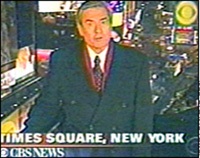
The CBS emblem in this single frame of a live video broadcast, was digitally inserted during the new year?s eve broadcast so as to conceal the NBC emblem that was on display in the background. The technology used in this case, is the same as that widely employed during the broadcast of sporting events to display advertisements on billboards.
tagged? Media
Media
 The 1996 Child Pornography Prevention Act (CPPA) extended the existing federal criminal laws against child pornography to include certain types of ?virtual porn?. In 2002, hearing Ashcroft v. Free Speech Coalition, the United States Supreme Court found that portions of the CPPA, being overly broad and restrictive, violated First Amendment rights. The Court ruled that images containing an actual minor or portions of a minor are not protected, while computer-generated images depicting a fictitious minor are constitutionally protected.
The 1996 Child Pornography Prevention Act (CPPA) extended the existing federal criminal laws against child pornography to include certain types of ?virtual porn?. In 2002, hearing Ashcroft v. Free Speech Coalition, the United States Supreme Court found that portions of the CPPA, being overly broad and restrictive, violated First Amendment rights. The Court ruled that images containing an actual minor or portions of a minor are not protected, while computer-generated images depicting a fictitious minor are constitutionally protected.
tagged? Law
Law
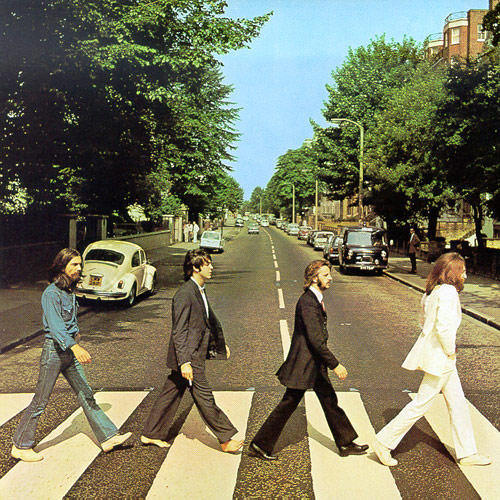
The original copy of the Beatles Abbey Road album cover shows Paul McCartney, third in line, holding a cigarette. United States poster companies have airbrushed this image to remove the cigarette from McCartney?s hand. This change was made without the permission of either McCartney or Apple Records, which owns the rights to the image. ?We have never agreed to anything like this,? said an Apple spokesman. ?It seems these poster companies got a little carried away. They shouldn?t have done what they have, but there isn?t much we can do about it now.?tagged? Media,?
Media,? Smoking
Smoking
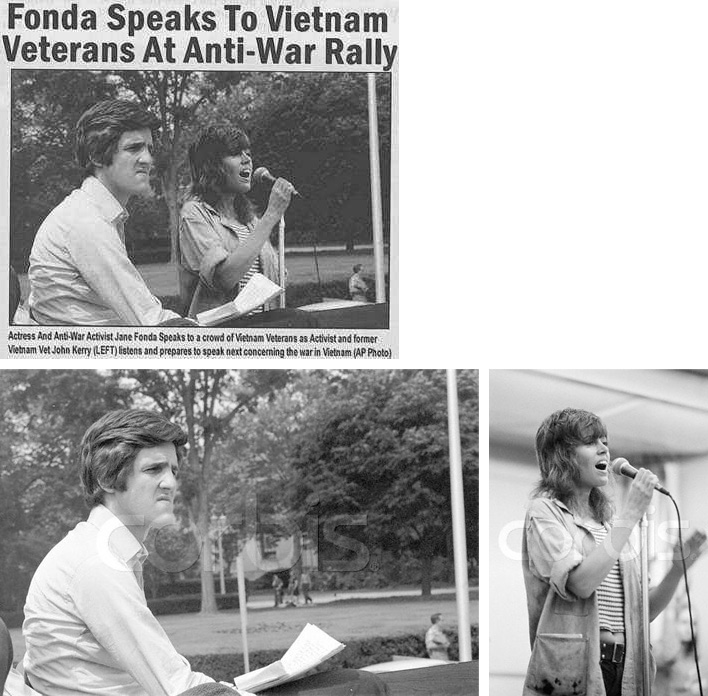
tagged?
 Media,?
Media,? Politics
Politics A magistrate in Sydney, Australia threw out a speeding case after the police said it had no evidence that an image from an automatic speed camera had not been doctored. This case revolved around the integrity of MD5, a digital signature algorithm, intended to prove that pictures have not been doctored after their recording. It is believed that this ruling may allow any driver caught by a speed camera to mount the same defense.
A magistrate in Sydney, Australia threw out a speeding case after the police said it had no evidence that an image from an automatic speed camera had not been doctored. This case revolved around the integrity of MD5, a digital signature algorithm, intended to prove that pictures have not been doctored after their recording. It is believed that this ruling may allow any driver caught by a speed camera to mount the same defense.tagged?
 Law,?
Law,? Uncomfirmed claims
Uncomfirmed claims
A controversial ad appeared as part of the Ohio Senate campaign between incumbent Mike DeWine (R) and challenger Sherrod Brown (D). DeWine?s campaign created a video of the World Trade Center in flames to attack Brown as soft on terrorism. The ad shows the south tower burning; however, the north tower was hit first, so the south tower could not be burning without the north tower burning as well. A DeWine spokesman acknowledged the image was a ?graphic representation? by the firm that produced the ad, which used a still photo of the towers with computer-generated smoke added.tagged?
 Politics
Politics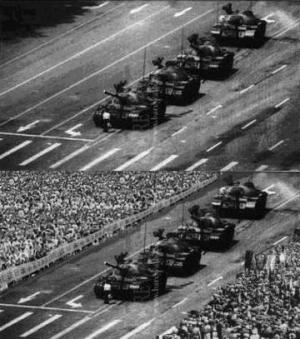
A study by Dario Sacchi, Franca Agnoli and Elizabeth Loftus, published in the journal Applied Cognitive Psychology, shows that people?s memories of events can be altered by viewing doctored images. For example, when presented with doctored images of the 1989 Tiananmen Square protest participants recalled the event as larger and more violent. (Shown in the lower panel is the doctored image in which the crowd was added.)
 Science
Science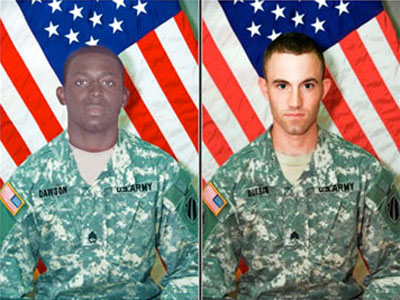
After publishing photos of two deceased United States soldiers, the Associated Press retracted the photos after learning that one of the photos was digitally altered. In the photo shown at the link at left, the body of the soldier on the left is copied from the soldier on the right. The photos were released by the U.S. Army at Fort Stewart in Georgia.tagged? Media
Media
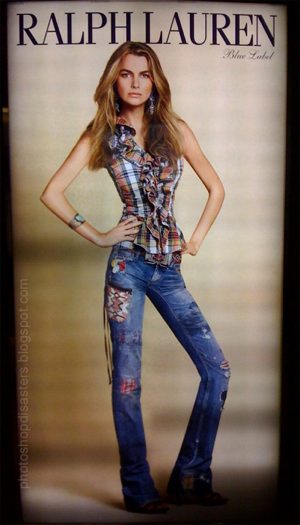
In perhaps the most notorious example of extreme retouching in fashion advertising, a magazine advertisement by Ralph Lauren depicted a heavily manipulated photo of model Filippa Hamilton. After numerous complaints that the resulting image had impossibly inhuman proportions, a Ralph Lauren representative admitted to ?poor imaging and retouching?, and added, ?we have learned that we are responsible for the poor imaging and retouching that resulted in a very distorted image of a woman?s body. We have addressed the problem and going forward will take every precaution to ensure that the calibre of our artwork represents our brand appropriately.? Despite this promise, at least one?subsequent image?also featured unrealistic proportions.
tagged?
 Body Image,?
Body Image,? Marketing
Marketing
A beleaguered British Petroleum (BP) contending with the gulf coast oil spill posted on their website a doctored photo of their command center in which three originally blank screens were altered. The doctored photo was eventually removed by BP and replaced with the original. BP spokesman Scott Dean said that there was no diabolical plot to photographically beef up the company?s command center. Rather, he said, a BP photographer with completely benign intentions just slipped the images in. ?Normally we only use Photoshop for the typical purposes of color correction and cropping,? Dean said. ?In this case they copied and pasted three ROV screen images in the original photo over three screens that were not running video feeds at the time.? He added, ?We?ve instructed our post-production team to refrain from doing this in the future.? Later, a second photo was removed from BP?s website after it was discovered to have been manipulated as well.
tagged?
 Marketing
Marketing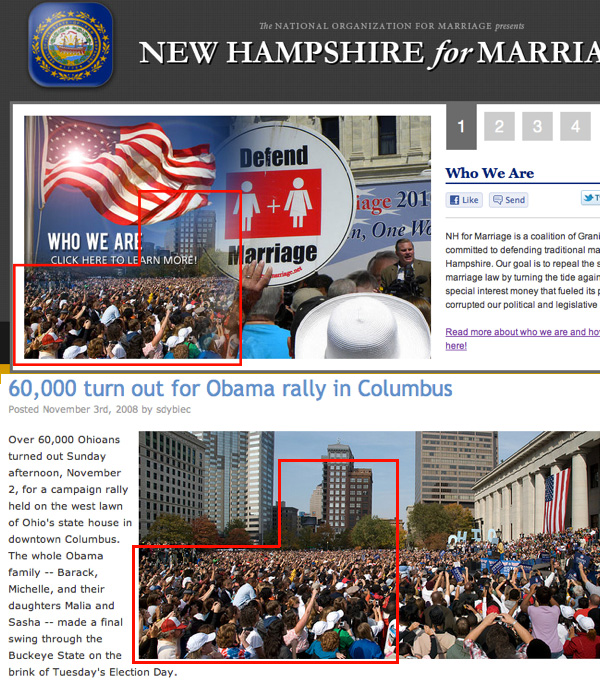
The National Organization for Marriage set up a website devoted to the repeal of gay marriage in New Hampshire, dressing it up with several composited crowd photos purportedly showing the groundswell of support for their cause. A gay blogger, however, soon noticed that at least two of the crowd photos were taken from Barack Obama campaign rallies in other states. NOM then removed the photos and replaced them with a photo of actual NOM supporters taken in New York.
 Politics
Politics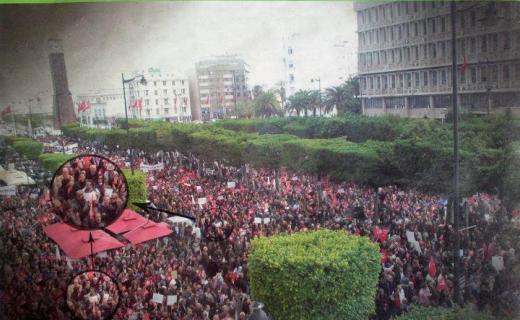
After an estimated 8-10,000 people demonstrated in the streets of Tunis to protest extermism and violence, the daily newspaper Le Maghreb published a photograph in which the crowd was digitally duplicated to appear even larger. The manipulation was discovered by readers, who posted online examples of where the same people could be found in multiple locations in the crowd. Zied Krichen, the editor-in-chief of the paper, later said that the image was digitally manipulated by the photographer, and they were unaware of the manipulation when they published the photo.
 Photojournalism ethics
Photojournalism ethics

What about photo manipulation in Bangladesh?
On March 7 of 2006 or 2007, Ittefaq publisehed a picture of Sheik Mujib addressing the crowd on March 7, 71. I could clearly detect duplication of crwd to make the field look more crowded.
It was an unnecessary overkill
The photos with “1950 Tydings” are missing.